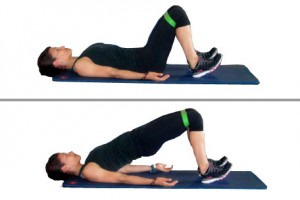The Best Way To Warm Up For A Marathon Training Run

Many people new to running and marathon training–and believe it or not, even seasoned marathon athletes–do not sufficiently warm-up prior to their marathon training runs or races. The reasons are numerous, but two of the common reasons are that it takes up too much time or they believe properly warm-up is useless.
The primary reasons to properly warm up are: 1) it enables the body to create exercise exertion more efficiently and with less effort, and 2) it helps reduce the risk of injury.
Think of warming up your body as warming up your car in the winter. Have you ever started your car in the dead of winter and then tried to accelerate it quickly while the engine is still cold? It feels sluggish and less responsive. The same happens with our bodies. If our muscles, ligaments, and connective tissues are not sufficiently warmed up our bodies need to exert more effort in order to respond to the exercise demand we place on them.
Another way to think about why warming up is important is to think about candy taffy. When taffy is cold you can easily break it if it’s bent. However, if it’s warmed up it becomes very pliable and even gooey. The same happens with our ligaments and connective tissues. If you place a high exertion level on yourself when you’re not sufficiently warmed up, the risk that you can hurt/injury yourself is much higher.
So what is the best way to warm up? We will give you a hit and tell you that it is not stretching! The best way to warm up is to do a dynamic warm-up. A dynamic warm-up routine consists of exercises that actively utilize continuous movement to prepare your muscles, ligaments, tendons, and joints for your training or event. And a dynamic warm-up also increases blood flow throughout the body and activates your nervous system which will help get you more mentally prepared for the task at hand.
While there are lots of great dynamic warm-up routines, here are several great ones that you can do anywhere and do not require special equipment: jumping jacks, pillar bridge, glute bridge, forward/reverse lunges, running in place with high knees, and squat jumps. Do enough to get you to the onset of perspiration; which usually takes as little as 5 minutes of activity.
